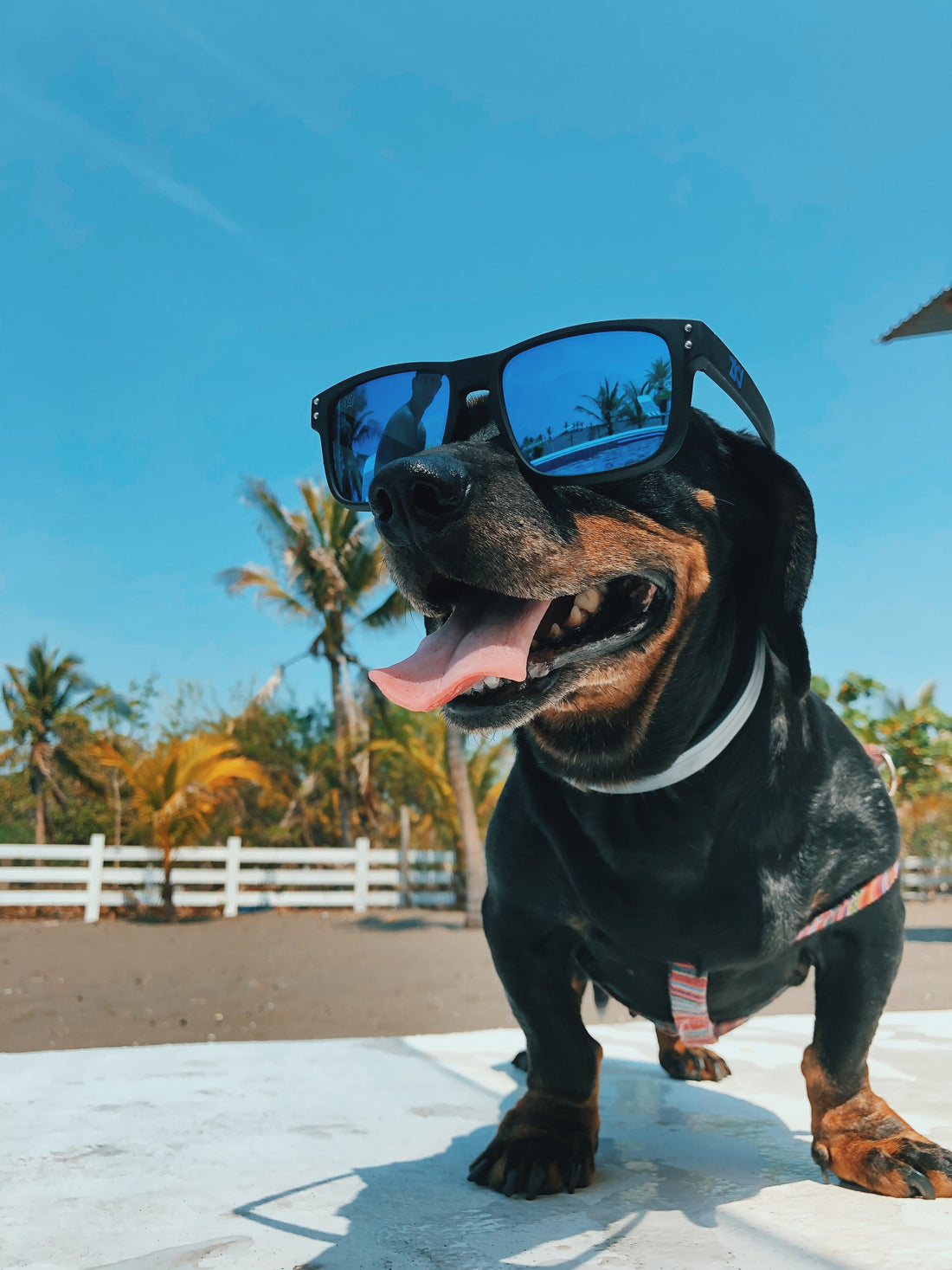Can Your Dog Get Vitamin D Poisoning?

Disclaimer: Joyride Harness writers are not professionals. Please consult your trusted veterinarian before providing your dog new supplements.
One of the last things we may think about during the winter months is too much sunlight. After all, shorter days and colder weather tend to mean that daytime fresh air is one of the things we miss the most.
Of course, it’s important to still walk your dog even during those colder days. It’s a time when your pooch can get some much needed exercise, bonding time, sniff those neighborhood doggie bulletin boards, and relieve themselves if needed. And regardless of whether it may look as bright as the summer, those sun rays are still making their way down.
So we may still be getting some sunlight and all that comes with it: maybe a need for sunglasses, the possibility for a little sunscreen, and some vitamin D.
While during the winter months especially it’s necessary for us to get enough vitamin D, it’s always possible to have too much of a good thing. What about for our fur babies?
Do Dogs Need Vitamin D?
First and foremost, it’s worth asking what dogs need in terms of vitamin D.
We’ve only recently learned that humans need way more of the “sun vitamin” than previously thought (the Vitamin D Council recommends 2,000 IU (or international units) to adults who get little to no sun exposure daily). Again for most of us the “little to no sun exposure” dramatically increases during winter time.
Dogs, however, have different body systems and nutritional needs. So how does vitamin D affect them?
As it turns out, vitamin D is not only an essential vitamin for people but for our four-legged friends, as well. What it does in our fur babies’ bodies is:
- Help with bone growth and maintenance by managing calcium levels in the body.
- Control how much calcium is absorbed through the intestines.
- Move calcium in and out of the bones themselves.
- Control how much calcium is released by the kidneys.
- Help muscles and nerves function properly.
Without the right amount of vitamin D, pups can experience congestive heart failure on top of complications from heart disease and weak bones or bone deformities.
So vitamin D year round is a must-have for our fur babies. Does the amount they need, like for people, change based on how many sunlit walkies they get?
Don’t pack up your pupper’s vitamin rich foods or supplements just yet!
When humans stand under direct sunlight, what happens is that the oil in our skin reacts with the UV rays which causes a chemical reaction creating vitamin D. Pretty neat, huh? Well, dogs also have this chemical on their skin ready to create the much-needed vitamin, but because of their fur it’s not absorbed as efficiently as you or I.
As a fun side fact, when you see a pet grooming their fur after a nice long sun-bathe not only are they getting nice and clean, they are also ingesting vitamin D!
Ultimately, though, this means that it’s important that they get the amount they need from extras such as:
- Liver
- Oily/fatty fish
- Egg yolk
- Dog-specific supplements
How Much is Too Much?
Knowing that your pup needs vitamin D and what can happen if they don’t get enough, what is the right amount? The Association of American Feed Control Officials (AAFCO) recommends between 500 to 3,000 IU of vitamin D per kilogram of food your dog eats.
It’s important to bear in mind that this is based on commercial food. If you’re creating your pooch’s food from scratch, there are likely to be different amounts of nutrients present. So make sure you talk to your veterinarian to find out the proper amount of vitamin D your dog needs.
Vitamin D is a fat soluble vitamin. This means it is broken down by fat or oil and not water. If there is any extra the body doesn’t need, it is stored in the liver, fatty tissues, and skeletal muscle. (With a water soluble vitamin, any excess can be urinated out of the body).
Because any extra vitamin D gets held in the body, if too large an amount is taken in your pup is then at risk for vitamin D toxicity, or poisoning.
And it’s important to repeat: knowing that 3,000 IU is the upper limit, generally (unless otherwise specified by a vet) a dog should not have more or risks getting vitamin D poisoning.
What to Look Out For
There are certain ways that tend to be the most common that dogs get too much vitamin D, and some of the sources may be a little surprising.
- Eating vitamin D supplements for humans
- Eating certain rat/mouse poisons - specifically cholecalciferol rodenticides, cholecalciferol being the chemical name for vitamin D3
- Vitamin D heavy food combined with too many additional supplements
It’s important to be aware of how much of it your fur baby is getting, so always check the nutrition and check with your vet!
If a pup is suffering from vitamin D toxicity, they may exhibit these behaviors:
- Vomiting
- Drinking more
- Urinating more
- Drooling excessively
- Losing weight
If suffering from too much vitamin D, your dog will show signs quickly - in a matter of days or even hours. If they start to show these signs, go to the vet right away.
Your vet can take a blood test and evaluate your pup to find out what’s going on, and there are treatments that can help get them back on track! But it’s important to catch a case of vitamin D toxicity before it’s too late.
Give your fur baby the absolute best care inside and out with the proper nutrition and gear! Because when they are happy and healthy, they can shine as their best selves. Make sure to check their food labels and most importantly with a vet to find the right amount of nutrients your pup needs.
This is just a sampling of tips and informational posts we offer at Joyride Harness. You can find more content including tips and tricks and how-tos for caring for your dog on our blog in this section.

























